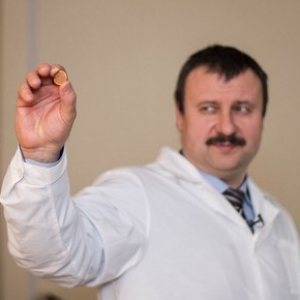Two small spacecraft of Samara University, including a nanosatellite with the sharpest hyperspectral "vision" in Russia, will be engaged in tracking oil spills and predicting forest fires during their work in orbit. The launch of the nanosatellites, named HyperView-1G and Colibri-S, is scheduled for November this year. The project is being implemented with the support of the Innovation Promotion Fund as part of the scientific and educational project Space-Pi ("Space π") of the program "On Duty on the Planet".
"The HyperView-1G and Colibri-S nanosatellites have passed all tests and are ready for launch. The spacecraft are equipped with compact hyperspectrometers with high technical characteristics created at our University, which have no analogues in the domestic market. Both satellites, of course, are primarily designed to solve scientific and educational tasks within the framework of the Space-Pi project: on the basis of data received from orbit, Russian schoolchildren, under the guidance of scientists, will learn the basics of hyperspectral image analysis and processing. In addition, several tasks have been set to monitor oil pollution by satellites, to search for and register oil spills. Another important task is forest monitoring. Hyperspectrometers will determine the moisture level of forests – these data will help to assess the likelihood of forest fires in a particular region: the drier the forest, the higher the fire danger. It is also planned to monitor crops," said Roman Skidanov, Professor at Samara University’s Department of Engineering Cybernetics, Doctor of Physical and Mathematical Sciences.
Hyperspectrometer devices "see" the world in a multichannel spectral display and allow for more effective environmental monitoring, revealing the characteristics and properties of observed objects invisible to humans. For example, hyperspectrometers can not only detect oil spills on the ground and the surface of rivers and seas, they also allow you to analyze the composition and thickness of the oil layer, determine the type of oil and its other characteristics, this makes it possible to predict the rate of spread of oil spills, more accurately assess the environmental consequences and choose the best cleaning method.
Hyperspectrometers can also "see" data directly from space, indicating one or another "well-being" of terrestrial plants. Depending on their condition, amounts of vitamins and moisture, ambient temperature and other factors, plants differently absorb and reflect electromagnetic waves in various ranges, and spectra. Based on spectral data, scientists calculate special vegetation indices showing a variety of parameters and properties of plants: for example, you can identify areas of crops with the highest green mass, with a high amount of chlorophyll, and find out the level of moisture reserves in plants. Similar data can be obtained on the state of forests.
Hyperspectrometers created by Samara scientists will be engaged in predicting forest fires and monitoring oil spills-record holders in their class.
"The six-unit HyperView-1G is equipped with a hyperspectrometer with a very high spatial resolution index is up to 7 meters per pixel in short-term mode and 13 meters per pixel in long-term operation, this is the best record figure for Russian nanosatellites.
The hyperspectrometer on the three-unit Colibri–S is weaker, but it also claims to set a kind of record in terms of resolution in the segment of classic three-unit nanosatellites - its resolution is about 60 m per pixel, which is several times higher than that of similar spacecraft of this class in Russia," Roman Skidanov noted.
Inferior in "vigilance" to its "colleague" with HyperView-1G, the hyperspectrometer on Colibri-S at the same time can "boast" a larger capture band – it has about 60 km, which is 4 times more than that of HyperView-1G. That is, we can say that Colibri-S has a broader view of the Earth, while HyperView-1G has a sharper and narrower focus. By completing the tasks set, both satellites will be able to work productively in pairs, complementing each other's data. The planned life of HyperView-1G and Colibri-S is three years.
About the satellites
HyperView-1G is a six-unit (that is, consisting of six 10x10x10 cm "cubes") spacecraft based on a nanosatellite platform of its own design by engineers of the Russian private space company SPUTNICS (part of the Sitronics Group). The hyperspectrometer installed on the satellite is equipped with a powerful long-focus lens of domestic production and is designed to work in the visible and near infrared range (the so-called VNIR range, from 400 to 1000 nm). The number of spectral channels ranges from 150 to 300. The length of the hyperspectrometer together with the lens is only about 30 cm. The hyperspectrometer has an extremely high resolution for this class of devices – up to 7 meters per pixel, which exceeds the hyperspectrometers of many much larger Earth monitoring spacecraft, both Russian and foreign. Nanosatellites with such acute hyperspectral "vision" have not been created in Russia before.
The Colibri-S small spacecraft was created on the basis of the CubeSat Geoscan 3U satellite platform. A 10x15 mm scanning slit hyperspectral camera with a diffractive optical element based on a lattice on a convex mirror with a 3.5/135 mm Jupiter lens is installed on a three-unit cubesat. The camera is designed to work in the visible range.
For reference:
Samara University (a member of the national project "Science and Universities") is one of the world leaders in the field of photonics. More than 40 years ago, the School of Computer Optics and Image Processing was established and has been successfully operating at the university, headed by Viktor Soyfer, Academician of the RAS and the President of Samara University. The University scientists have developed innovative diffraction optics, which has found its application in a variety of fields, such as outer space, medicine, and agriculture.
* “Space π” is the science-and-education project for development and production of small CubeSat-format spacecrafts on domestic satellite platforms, aimed at forming a grouping of about 100 CubeSats in orbit for several years, to create the infrastructure for involving schoolchildren in research and technical creativity in the field of space technologies.
 RU
RU  EN
EN  CN
CN  ES
ES 